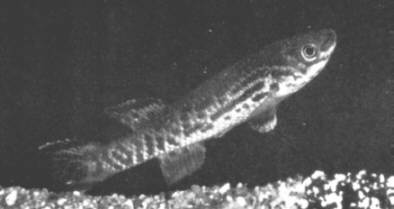|
Codes
|
|
|
|
History
|
|
|
|
Habitat
|
Obudu is situated at the head of a drainage area which eventually flows into the Cross River drainage. Obudu is well seperated from presently known populations of Fp.nigerianus. Misaje & Makurdi lie some distance to the north & west | |
|
Geography
|
This is an interesting population as Obudu is seperated from the main area of mamfense distribution to the south by a range of high ground which forces the water drainage into a different system although this eventually feeds the Cross River drainage by a circuitous route. | |
|
Images
|
|
|
|
Traits
|
||
|
Variability
|
||
|
Notes
|
